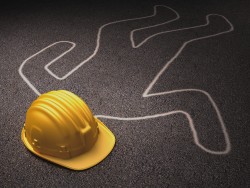Increase in Construction Deaths Proves there isn’t Always Safety in Numbers
An increase in construction deaths is being blamed on the number of new and inexperienced workers in the industry. The Associated General Contractors of America (AGC) says that new safety measures are necessary to address this increase.
AGC spokesman Brian Turmail says that as new, relatively inexperienced workers come on board, more as an industry needs to be done to make sure that these workers do not harm themselves or their co-workers. The total number of construction fatalities nationwide increased 18 percent, from 738 to 874 between 2011 and 2014.
Turmail said that many construction companies are struggling to find qualified workers to fill available positions amid growing demand for construction services. A recent Workforce Shortage Survey found that 86 percent of these companies that responded to the survey reported having a hard time finding qualified workers. Further, 15 percent of firms said that the lack of qualified workers has contributed to more safety incidents.
In response to these findings, the AGC has released new safety recommendations to help reverse the increase in fatalities and safety incidents. Those recommendations are as follows:
- Establish a buddy system for new hires.
- Hold safety orientation sessions for all new hires. This includes temporary hires.
- Ensure management and supervisors have the appropriate leadership and communication skills critical to instill a safety culture and concepts into the workforce.
- Institute two separate pre-task hazard analysis training programs – one for the crew and one for first line supervision.
- Hold monthly lunch and learn safety training programs.
- Require all foreman and superintendents to attend leadership in safety excellence certification courses.
- Hold targeted safety training to address all safety incidents.
- Make sure all training and materials are in the language of the entire workforce.
- Train the trainers.
- Create worker task-specific pocket safety guides for every task assigned.
- Establish craft-specific safety mentoring programs.
- Issue easy-to-read badges to all workers to indicate their level of training.
- Authorize all workers to issue stop work cards to address safety risks.
While safety should always be a construction company’s number priority, safer worksites also help construction companies stay financially healthy. The Bipartisan Budget Act of 2015 allows for the Occupational Safety and Health Administration to raise fines to match national inflation rates.











































